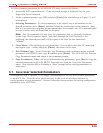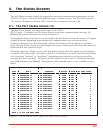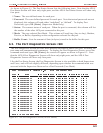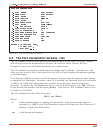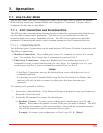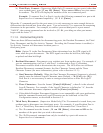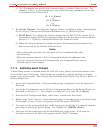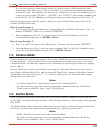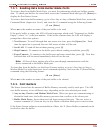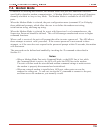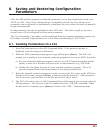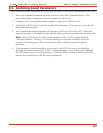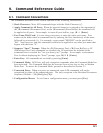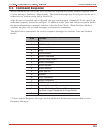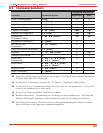
7. It is only necessary to enter enough letters of the port name to differentiate the Hunt
Group ports from other ports. Type an asterisk (*) to represent the remaining characters
in the port name. For example, to connect your resident port to the first available port in
a group of ports named "SALES1", "SALES2", and "SALES3", the connect command can
be invoked as /C S* [Enter], providing no other port names begin with the letter "S".
Hunt Group port names must be unique. Otherwise, ports with similar names will also be
included in the Hunt Group.
Hunt Group Example 1:
1. Ports 1 and 2 are Modem Mode ports, and modems are installed at both ports. Port 1 is
named "MODEM1" and Port 2 is named "MODEM2".
2. Your resident port is Port 4. To connect to the first available Modem, access the
Command Mode and type /C MODEM* [Enter].
Hunt Group Example 2:
1. Ports 3, 4, and 5 are Any-to-Any Mode ports. All three ports are named "SERVER".
2. Your resident port is Port 1, and you want to connect Port 2 to the first available server,
access the Command Mode and type /C 2 SERVER [Enter].
7.2. Passive Mode
Passive Mode Ports function the same as Any-to-Any Mode Ports, but do not allow access to
Command Mode. A Passive Mode Port can communicate with other ports, but cannot enter
Command Mode, and therefore cannot invoke commands to redefine port parameters, display
status, and etc.
Passive Mode Ports can be connected by accessing the Command Mode from a free Any-to-
Any Mode or Modem Mode Port, and invoking the Third Party Connect or Resident Connect
Command as described in Section 7.1.1.2. Passive Mode ports will not buffer data, except
during baud rate conversion.
Notes:
•
A Passive Mode Port is not allowed to access the Command Mode.
•
In order to ensure supervisor access to important command functions, the Passive
Mode is not available to Ports 1 and 2 (SetUp Ports).
7.3. Buffer Mode
Ports configured as Buffer Mode ports will collect data from the connected device and store it
in the APS's statically allocated memory. Each APS port features a fixed length, fixed position
data buffer.
The Buffer Mode allows collection of data from various devices without the requirement that
all devices use the same communication parameters (e.g. baud rate, parity, etc.).
Notes:
•
Buffer Mode Ports cannot access the Command Mode.
•
In order to ensure supervisor access to important command functions, the Buffer
Mode is not available to Ports 1 and 2 (SetUp Ports).
7-4



